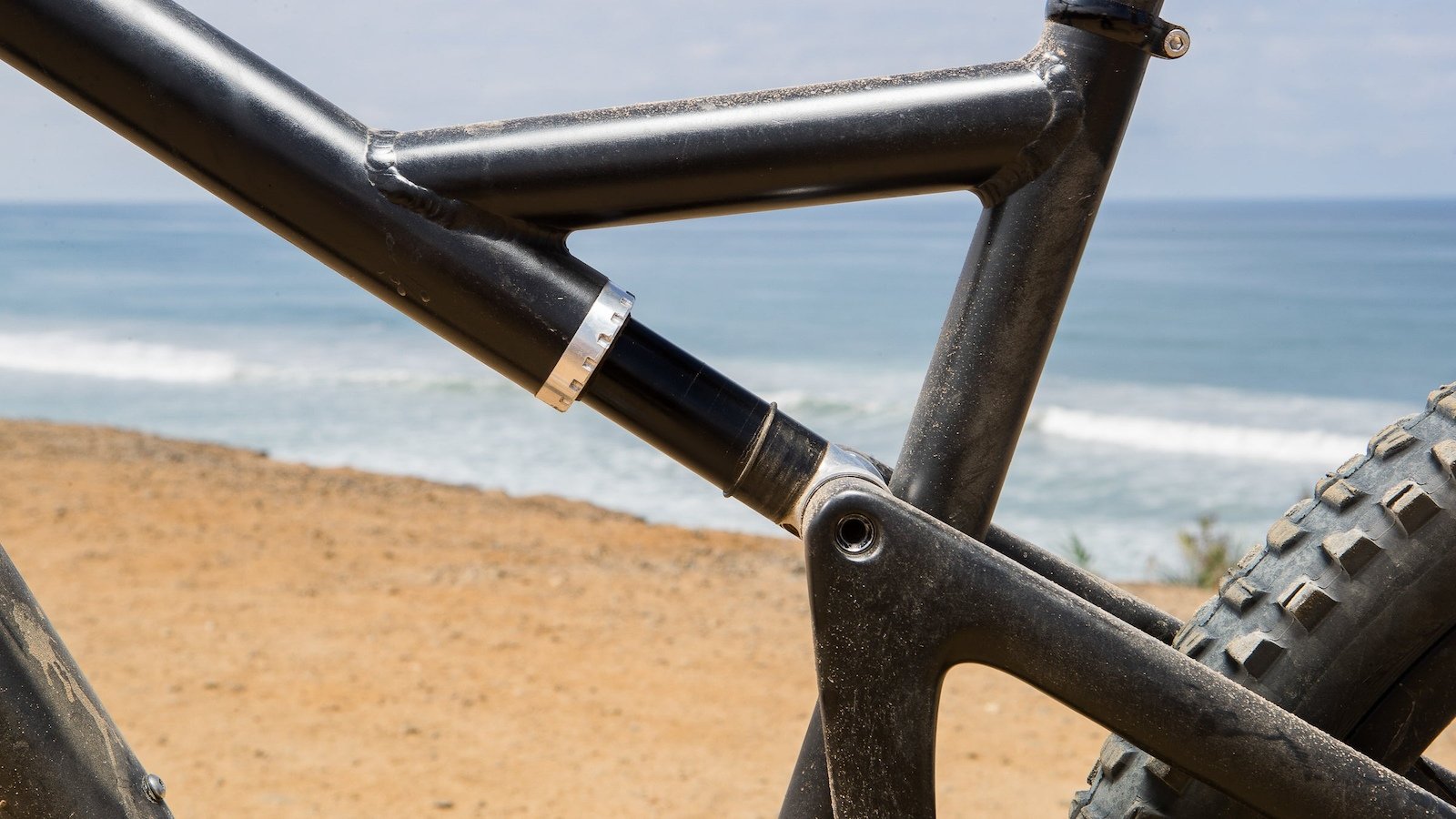Why It’s OK That the New Digit Datum has a Proprietary Rear Shock
August 31, 2021, Mike Ferrentino. Reprint with permission from BetaMTB
I asked Digit Bikes founder, Tim Lane, about the proprietary shock design he’s integrating into his debut model, the Datum. If you haven’t read it, here is my first-ride report on the Datum. Specifically, I asked: “The Strut. I get the feeling that people will be leery of this if it doesn’t have some major brand name association. As it sits right now, where are all the individual parts for the strut being sourced and assembled? Is this a damper that you yourself designed, and/or can we leverage the cooperation of some big name suspension company in here somewhere?”
His response was detailed and entertaining, and I feel it is worthy of a standalone piece, so here it is:
TLDR Version:
It’s the “Digit Integer”. There’s no brand affiliation, the shock brands want to sell features which I don’t want, so I’m making it myself. My SoCal factory is capable of making all of the shock’s parts, but they’ve advised me to outsource some so that they can focus on the elements where they add value. I have foreign and domestic sources for the outsource parts, my decision on where to go will depend how many bikes are needed to fulfill the Kickstarter demand.
TLDR, Tim Lane Design and Research Version:
Here’s the longer read: Initially I was worried about this too, that I might not be smart enough, or capable, or have the bandwidth to manufacture a shock. So I had discussions with well known shock makers and had planned to outsource it. I eventually abandoned that path for a few reasons:
a) I made my first good* prototype strut using a damper piston from one of the most sophisticated name brand shocks. I chose the most complex piston because I believed it would give me the most options for tuning and would deliver the best performance. However, I ended up not needing the complexity: I plugged the very smartly designed pedal-mode flow circuit, and removed the lockout parts. What I ended up with, what you rode, is a relatively basic piston with a cross-over shim stack tuned to match the frames’ low leverage ratio.
* I made some overly complex prototype struts before I got to ‘good’. I over-engineered because I didn’t want the proof of concept prototypes to fail because any aspect was too flimsy or under-tunable. I started out using needle bearing sliders (like in a Lefty), and dampers with separate compression and rebound pistons (taken from forks because I had a hunch that matching the front and rear damping would be magically synergistic. That hunch was wrong.). These things were just unnecessarily complex and thus were stripped away.
b) Everyone who’s ridden the bike has been very impressed with the shock, even without externally adjustable damping (the production shocks have red and blue knobs). ShockWiz has confirmed that things have indeed been good.
c) The established shock makers want to include their fancy acronymed features**, because that’s what gives them an edge over their competitors in the one-shock-to-fit-all-bikes, short-eye-to-eye, high-motion-ratio game. Because I’m playing the game without the one-shock-to-fit-all-bikes, short-eye-to-eye, high-motion-ratio rules, I don’t need that complexity. I believe simplicity is better for reliability and performance. It’s a factor in the strut being simple enough to fully rebuilt without special tools or skills. (there’s a photo of the required tools on the Kickstarter page).
**e.g. I have name brand shocks here from Ibis Ripmos and Specialized Stumpjumpers which from the outside appear to have an enlarged negative air spring volume, they have nice big stickers pointing out the feature. If you look inside however, there’s no chamber, it’s just solid aluminum making things heavier.
d) Shock manufacturers have been particularly affected by the Covid bicycle supply chain slow down. I have enough Covid related supply chain issues already, I don’t want to wait for them, and I worry that they’re too busy playing catch up to pay attention to me.
e) I’ve worked on the tuning side of bike shocks since the 90’s (I was a tech, tuner and trainer for the UK’s RockShox importer in the days of the DHO fork and original Super Deluxe shock, and have been tinkering ever since).
f) In between stints in the bike industry I’ve worked in aerospace where reliability is of paramount importance. This included some work with aircraft landing gear, the experience probably influenced me in designing the strut.
g) I have consulted with known shock gurus in the bike and motorcycle world, and have their offers of help if I need it with any part of the design, manufacture or assembly. My decision on who to work with will depend in some part on how many shocks are needed to fulfill the Kickstarter demand. Drawing the butted tubing is the bikes longest lead-time item, once that’s ordered I’ll have some time bring the shock manufacture online.




